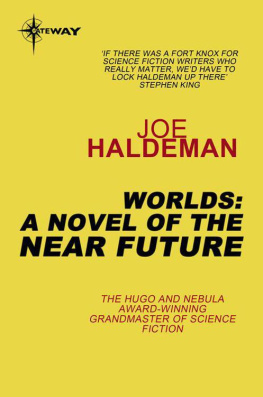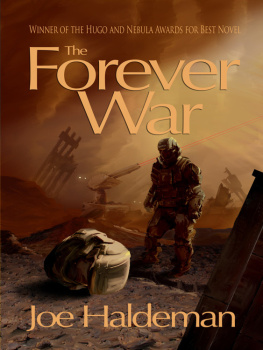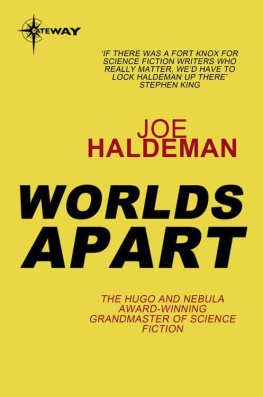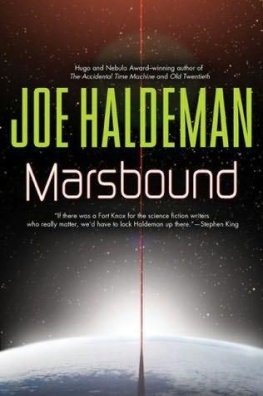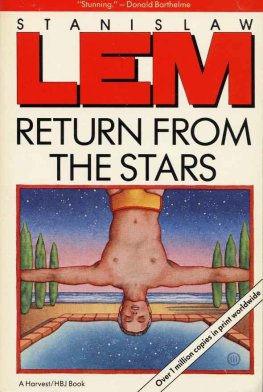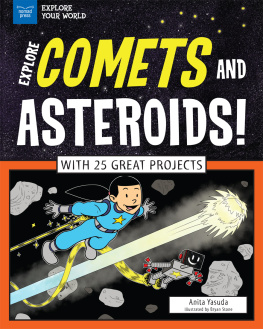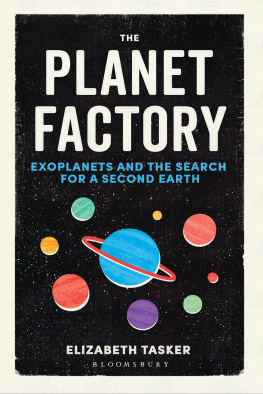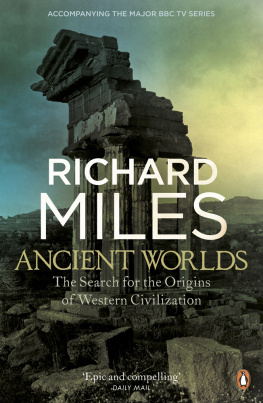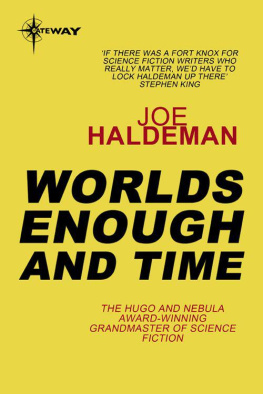Joe Haldeman
WORLDS
A Novel of the Near Future
you shall above all things be glad and young.
For if youre young,whatever life you wear
it will become you; and if you are glad
whatevers living will yourself become.
Girlboys may nothing more than boygirls need:
i can entirely her only love
whose any mystery makes every mans
flesh put space on;and his mind take off time
that you should ever think,may god forbid
and (in his mercy) your true lover spare:
for that way knowledge lies, the foetal grave
called progress, and negations dead undoom.
Id rather learn from one bird how to sing
than teach ten thousand stars how not to dance
e. e. cummings

In the last years of the twentieth century (as Wells might have put it), Gollancz, Britains oldest and most distinguished science fiction imprint, created the SF and Fantasy Masterworks series. Dedicated to re-publishing the English languages finest works of SF and Fantasy, most of which were languishing out of print at the time, they were and remain landmark lists, consummately fulfilling the original mission statement:
SF MASTERWORKS is a library of the greatest SF ever written, chosen with the help of todays leading SF writers and editors. These books show that genuinely innovative SF is as exciting today as when it was first written.
Now, as we move inexorably into the twenty-first century, we are delighted to be widening our remit even more. The realities of commercial publishing are such that vast troves of classic SF & Fantasy are almost certainly destined never again to see print. Until very recently, this meant that anyone interested in reading any of these books would have been confined to scouring second-hand bookshops. The advent of digital publishing has changed that paradigm for ever.
The technology now exists to enable us to make available, for the first time, the entire backlists of an incredibly wide range of classic and modern SF and fantasy authors. Our plan is, at its simplest, to use this technology to build on the success of the SF and Fantasy Masterworks series and to go even further.
Welcome to the new home of Science Fiction & Fantasy. Welcome to the most comprehensive electronic library of classic SFF titles ever assembled.
Welcome to the SF Gateway.
www.sf-gateway.com
You cant know space unless you were born there. You can get used to it, maybe.
You cant love the surface of a planet if you were born in space. Not even Earth. Too big and crowded and nothing between you and the sky. Things drop in straight lines.
But Earth people do visit space and Worlds people do visit Earth. Always to come back changed, sometimes leaving changes.
The world didnt end in the twentieth century. It did take a beating, though, and through most of the next century the psychic scars of the recent past were a prominent part of the human landscape; more prominent, perhaps, than present wonders or future hopes.
Many people, though not a majority, thought that the only real hope for the human race lay out in the Worlds, the orbiting settlements whose population, by the eighties, was approaching a half million. It looked as if the Worlds gave humanity a place to start over, clean slate, unlimited room for expansion. It looked that way from the Worlds, to most people, and from the Earth, to some.
They were called the Worlds for convenience, not as an expression of any significant degree of political autonomy or common purpose. Some, such as Salyut and Uchden, were simply colonies, with populations that were still loyal to their founding countries. Others owed their first allegiance to corporations like Bellcom or Skyfac or, in one case, to a church.
There were forty-one Worlds, ranging in size from cramped little laboratories to vast New New York, home to a quarter of a million people.
New New York was politically independent, at least on paper. But after forty years of exporting energy and materials, it still owed huge debts to the United States of America and New York State. It had looked like a sound long-term investment back in 2010, since smaller-scale energy farms like Devons World (then called ONeill) were making fortunes. But then came cheap fusion, and New New could barely charge enough per kilowatt-hour to keep up interest payments. Two things kept the settlement in business: foamsteel and, surprisingly, tourism.
New New started out as an asteroid named Paphos and a philosophy called economies of scale.
Paphos (its real name was 1992BH) was a small asteroid whose orbit brought it, once each nine years, to within 750,000 kilometers of Earth, about a half million miles. It was a nickel-iron asteroid, which meant it was made of nearly pure steel.
Two hundred and fifty trillion tonnes of steel is a prize worth going after. In 2001, an orbiting factory intercepted Paphos and latched on to it. For the next nine years, hundreds of carefully calculated nuclear blasts warped its orbit, bending it in toward Earth. In 2010, it slid into a geosynchronous orbita new star hanging still in the skies of North and South America, unblinking, brighter than Venus.
The bombs that had steered it were shaped charges, and so did double duty, excavating the planetoid while moving it. When Paphos arrived at its new home, its middle had been scooped out, providing a hollow where people would eventually live. It had been made to rotate much faster than any natural planetoid, spinning to provide artificial gravity on the inside.
The megatonnage that brought Paphos into orbit and started it spinning had been donated by the United States (scavenged from obsolete weapons left over from the previous centurys arms race), in return for perpetual most favored nation status. One percent of New New Yorks mass would supply the United States with steel for a thousand years, and it would be the only country that didnt have to pay duty.
They sealed off the open end and filled the hollow with air, soil, water, plants, light; landscaping the interior into a combination of carefully planned wilderness and manicured parkland. Then the people started to come. Miners at first, with huge mole-machines that chewed steel out of the solid metal ground beneath the growing grass and forest. The steel was worth its weight in money to any country or corporation that was building structures in orbit. Normally, ninety-nine percent of the cost of building materials was launch expense. New New York could transfer steel to any orbit for pennies, via slow solar-powered tugs.
After the miners had been tunneling for a year or so, the construction crew came in, to make city of the corridors and caverns. Like its namesake, New New York was to have a Central Parkmore literally central in the case of New Newto provide a place of greenery and open spaces for people who would live most of their lives in metal caves.
The cheap fusion that had undermined the energy market also made space travel accessible to the merely wealthy. Tourists came to strap on wings and fly (effortless along the zero-gravity axis) or to sit for hours in the observation domes, lost in the terrible wheeling beauty. Honeymooners and others came to consummate themselves in weightlessness, which is wonderful unless you start spinning, and to enjoy the extravagance of paying two thousand dollars a night for a small room in the Hilton. Oenophiles scrapped their life savings to come up and sample the wines that were never exported: the Saint-milions, the Chteaux dYquem and -neuf-du-Pape that had no vintage years because every year was the same; every year was perfect; the wine of the century down to eight decimal places.





